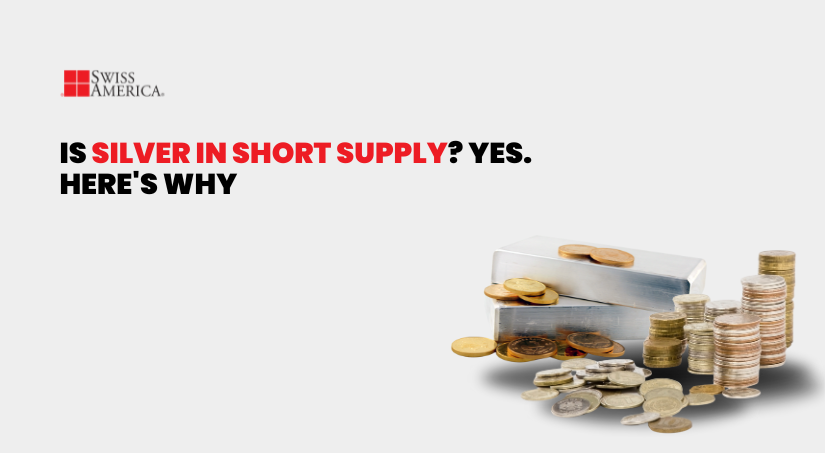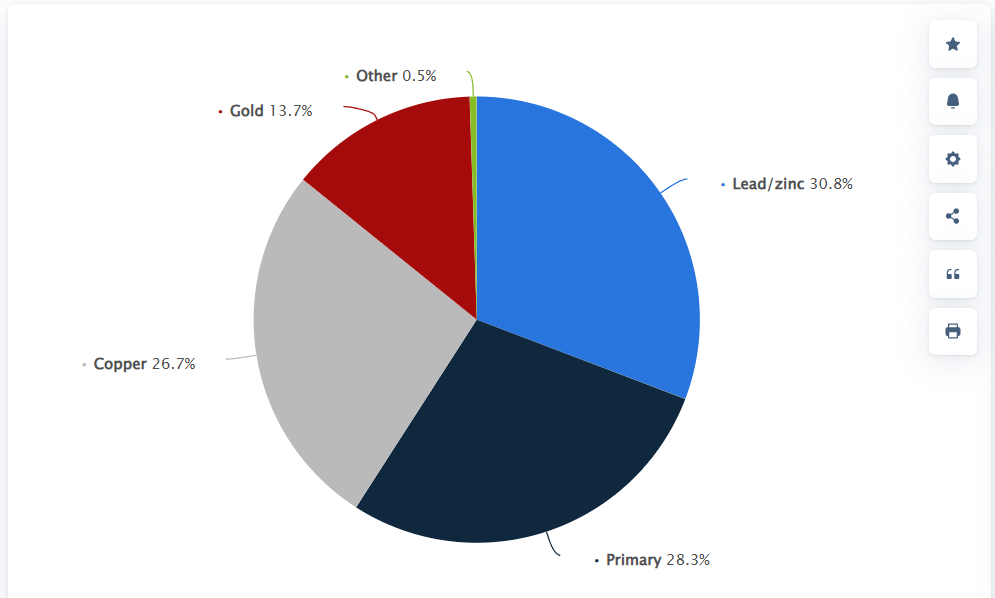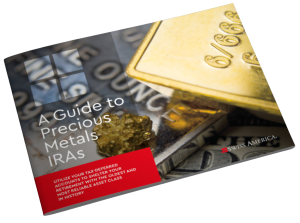
Is silver in short supply? And is it about to skyrocket? The gap between supply and demand has been widening for the last four years, and we now have a deficit. Learn more about why and if it’s a good time to buy silver.
We’ll get straight to the point. Yes, silver is in short supply. The Silver Institute’s 2024 world silver survey projects a 17% increase in the global silver deficit driven by a 2% higher demand and a 1% decline in supply.
What’s behind the shortage, and what does that mean for silver investing? This article covers silver supply, demand and potential reasons why silver is up over 30% in 2024.
Current silver supply situation
Data from the Silver Institute Industry Association shows we’re currently looking at a deficit of about 265 million ounces. That’s nearly double the gap from last year.
But this trend isn’t new. For four consecutive years, we’ve been using more silver than we’re producing. In 2023 alone, the silver shortage was about 142 million ounces.
We’ve seen deficits before, like in 1999, when industrial consumption exceeded supply by 155.7 million ounces. The challenge is that even with years of surplus, the current shortfalls outweigh any excess silver. This appears to point toward a timeperiod of higher demand and tight supply.
Silver shortage by the numbers
Demand for silver continued to grow for the past four years while production declined. We now see declining identifiable silver inventories on commodity exchange depositories like COMEX and LBMA. Figures show a total supply deficit of 689.1 million ounces (MOZ) for this time period.
Causes of the silver shortage
What’s causing the silver storage? The basic principles of supply and demand lead us to our current structural market deficit.
Increased demand for silver
One of the largest market dynamics driving silver demand is the solar industry. As more people look for sustainable energy solutions, solar-related demand increased by 158% between 2019 to 2023. Analysts expect silver consumption demand in this sector to increase by an additonal 20% in 2024 and nearly 169% by 2030.
With the push for renewable energy, solar panels, and electric vehicles, we can expect a growing demand since silver supports these industrial applications. The metal’s conductive properties make it ideal for turning sunlight into electricity which is why the industry uses it in photovoltaic panels.
In the growing electric vehicles industry, silver is a major component in the battery and charging technology.
Limits on silver production
On the supply side, the reasons for the silver shortage are limitations on production capacity. About 80-85% of the total silver supply comes from mining. The remaining 15% comes from recycling. But most new silver production isn’t from dedicated silver mines. It’s actually a byproduct of other mining other money metals like copper, lead and zinc.
The chart below from Statista shows the sources of silver from 2023 with only 28% coming from direct mining.

Like everything else, costs keep rising and the production costs to mine silver increased by 28%, hitting nearly $18 per ounce in a year. That’s cutting into mining companies’ profits, which means fewer new companies are willing to enter the market.
Impact on silver prices
Will this historic silver shortage cause prices to skyrocket? Most analysts and investors think so. But, if you look at historical trends, silver prices don’t always rise during periods of supply shortages. Looking at history, here’s the performance of sivler prices during previous supply deficits:
1999: Despite a deficit of 155.7 million ounces, the average silver price dropped 6.2%.
2000: The average price declined to around $4.95 per ounce.
2001-2002: Prices remained historically low, with averages around $4.37 in 2001 and increasing slightly to $4.60 in 2002, marking only a modest increase of about 5%.
And here’s how the price of silver looks in more recent years:
2020: The average price gained about 47.44% to around $20.55 per ounce.
2021: Prices peaked early in the year but ended down 11.55% from 2020.
2022: The average price saw a slight recovery but still down 13.4% from the previous year.
2023: Prices stabilized around $23.35 with a minor annual decline of 0.72%.
2024 (as of October): Silver is about $32.42 per ounce which is 35.30% higher than 2023.
We recently discussed our thoughts on the silver market and why we believe prices will increase:
Investing in silver
Investing in physical silver gives you a way to diversify your overall investment portfolio. Many people turn to precious metals as a way to reduce risks and total reliance on the stock market for their investments.
Owning silver bars or coins also gives you a tangible asset. Yes, you can invest in silver through the futures market, ETFs, mining stocks or mutual funds but these are all paper assets. Holding actual physical silver bullion gives you an investment that you can completely control.
The best way to think about owning silver is the same as for any precious metal – a long term investment that gives you an inflation hedge and store of wealth. In the Reddit /Wallstreetsilver forum, user Adonius_21 expressed their thoughts on the shortage and investing this way:
“I see this a little different, it is insurance against the collapse of the fiat currency, which is happening now. It may take a years until you see some price moves. I wouldn’t buy more if I couldn’t carry financially.
Time will come when the price will surge, it’s the only question of when will this happen.”
Why investors choose Swiss America
If you do decide to invest in silver or even use an IRA, the Swiss America team can help you get started. For over 40 years, we’ve supported thousands of happy customers with their precious metals investments.
You’ll find educational resources like our in-depth guides, regular podcasts and daily news updates to help you make the right decisions for your needs. We can also help guide you in how to invest with a portion of your 401(k) or existing IRA so that you can take advantage of the tax benefits with a precious metals IRA.
Our clients appreciate our credentials and commitment to high-quality metals as well as transparent pricing. You’ll also get access to our online portal to see all of your transaction history and real-time silver market updates. And, if you ever need to sell your precious metals assets, you can conveniently get a liquidation quote and sell to us via our buy-back program.
Silver shortage final thoughts
We do have a silver shortage. And, we also have increased demand with an asset that’s difficult to produce. What does all this mean for you as an investor?
There is potentially an opportunity to see higher returns with silver than other assets like gold or platinum. You also may want to consider investing primarily as a way to diversify your portfolio and reduce risks.
To learn more about investing in silver, connect with the Swiss America team today!
Is silver in short supply? FAQ
Why is silver production so low?
Silver production is low due to declining quality of naturally occurring minerals, rising mining costs, and the fact that most silver comes as byproduct of mining other metals.
Is silver getting rare?
As a precious metal, silver is rare but experts don’t yet classify it as getting rare. Its supply is tightening due to structural deficits and increasing industrial demand.
Is there a real silver shortage?
Yes. There is a real silver shortage. We’ve had market deficits in the last few years, low production, and declining inventories. At the same time, the solar and sustainable energy sectors have increased demand for silver.
Note: The information in this post is for informational purposes only and should not be considered tax or legal advice. Please consult with your own tax professionals before making any decisions or taking action based on this information.
